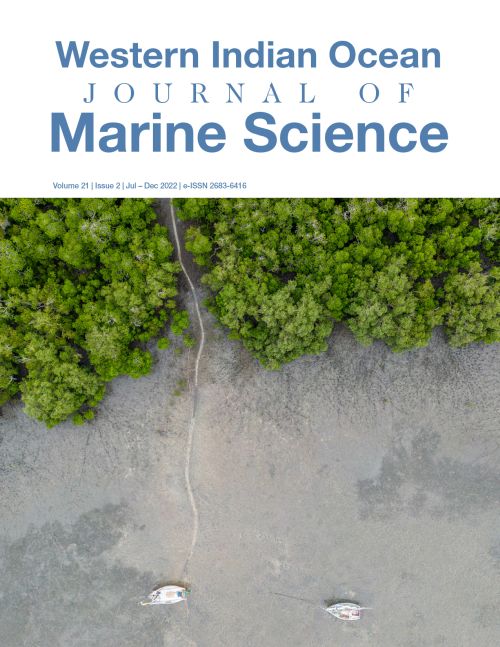Main Article Content
Retained fish catches of artisanal fishers is dependent on fishing area, season and fishing gear type: A case study from the south coast of Kenya
Abstract
The artisanal fishery is one of the sources of livelihood along the Kenya coast. Catches of retained fish of artisanal fishers between two fishing areas on the south coast of Kenya were compared. Artisanal fishers usually retain a portion of their daily catch which is reserved for family consumption while the rest is traded for cash to meet other family needs. This study hypothesized that retained fish catches were influenced by fishing area, fishing gear type and season. Daily fish landings and retained fish catches among artisanal fishers were monitored between August 2020 to July 2021 covering the South East Monsoon (SEM) and North East Monsoon (NEM) in Msambweni and Vanga fishing areas. A total of 60 fishers (30 for each area) were randomly selected and their retained catch monitored on a daily basis. The overall total fish landings were 23.3 tons and 210 tons in Msambweni and Vanga, respectively. The mean catch rate at Msambweni was 3.3 ± 0.12 kg.fisher-1day-1 in the NEM season and 2.2 ± 0.09 kg.fisher-1day-1 in the SEM season. Fish catch rates in Vanga was 8.5 ± 0.28 kg.fisher-1day-1 in the NEM season and 7.9 ± 0.29 kg.fisher-1day-1 in the SEM season. A total of 0.98 tons (only 4.2 %) of fish was retained versus 22.32 tons (95.8 %) not retained by the artisanal fishers in Msambweni, while in Vanga a total of 1.64 tons (only 0.78 %) was retained versus 208.36 tons (99.22 %) not retained. Retained fish catch varied significantly with season and type of fishing gear used (p < 0.05). Among the retained species in Msambweni, Siganus sutor made the highest contribution (53 %), followed by Lethrinus mahsena, (5.08 %). The species Euthynnus affinis and Sphyraena obtusata were mostly retained in Vanga with a contribution of 10.4 % and 10.2 %, respectively. The same retained fish species represented the most abundant species in the overall fish landings, however sizes were significantly smaller than those not retained by fishers (p < 0.05). Results of non-Metric Multidimensional Scaling (nMDS) ordination showed differences in species composition between fishing areas, seasons and fishing gear types with implication on fishers’ retained catches.






